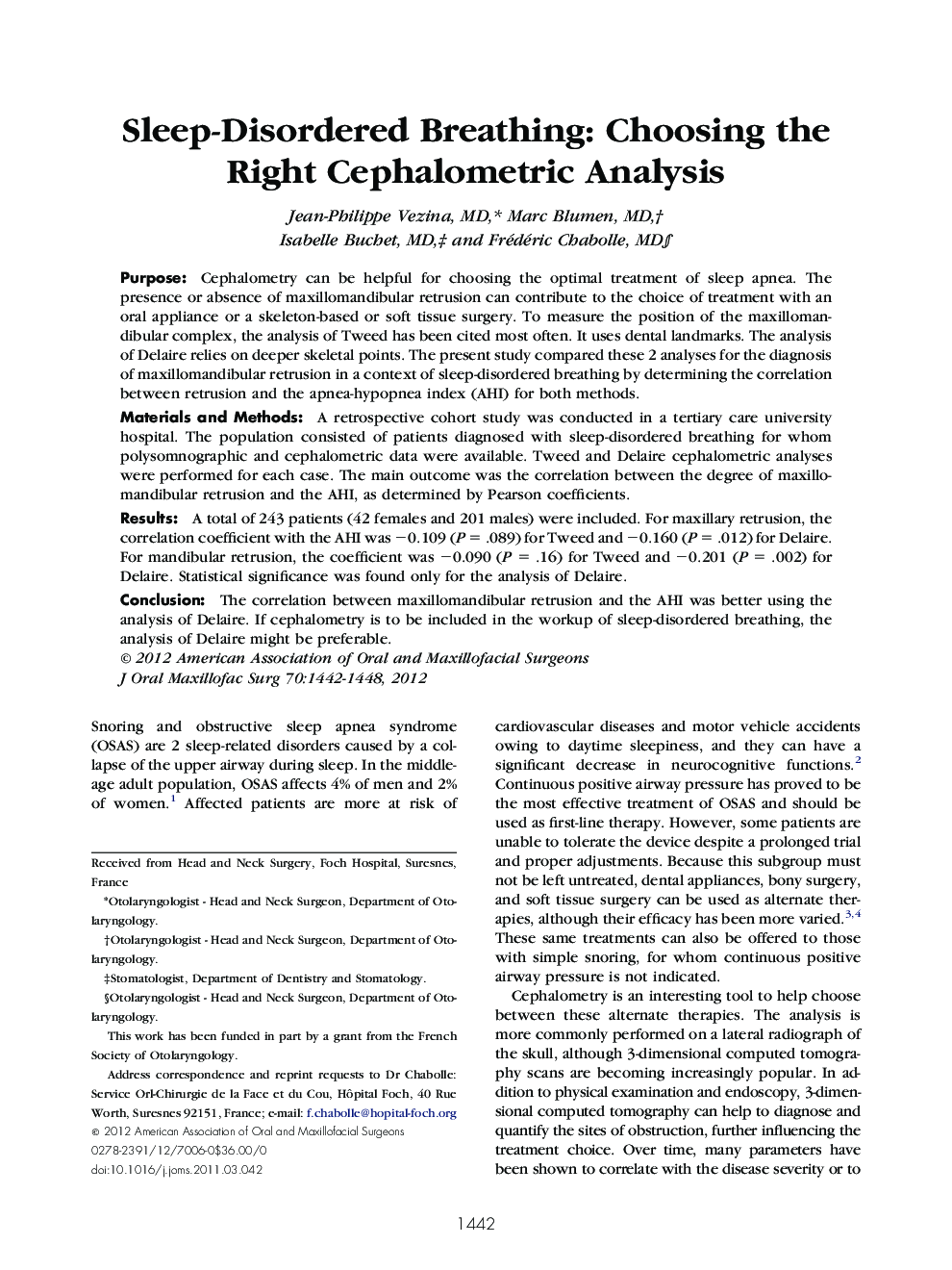| Article ID | Journal | Published Year | Pages | File Type |
|---|---|---|---|---|
| 3153107 | Journal of Oral and Maxillofacial Surgery | 2012 | 7 Pages |
PurposeCephalometry can be helpful for choosing the optimal treatment of sleep apnea. The presence or absence of maxillomandibular retrusion can contribute to the choice of treatment with an oral appliance or a skeleton-based or soft tissue surgery. To measure the position of the maxillomandibular complex, the analysis of Tweed has been cited most often. It uses dental landmarks. The analysis of Delaire relies on deeper skeletal points. The present study compared these 2 analyses for the diagnosis of maxillomandibular retrusion in a context of sleep-disordered breathing by determining the correlation between retrusion and the apnea-hypopnea index (AHI) for both methods.Materials and MethodsA retrospective cohort study was conducted in a tertiary care university hospital. The population consisted of patients diagnosed with sleep-disordered breathing for whom polysomnographic and cephalometric data were available. Tweed and Delaire cephalometric analyses were performed for each case. The main outcome was the correlation between the degree of maxillomandibular retrusion and the AHI, as determined by Pearson coefficients.ResultsA total of 243 patients (42 females and 201 males) were included. For maxillary retrusion, the correlation coefficient with the AHI was −0.109 (P = .089) for Tweed and −0.160 (P = .012) for Delaire. For mandibular retrusion, the coefficient was −0.090 (P = .16) for Tweed and −0.201 (P = .002) for Delaire. Statistical significance was found only for the analysis of Delaire.ConclusionThe correlation between maxillomandibular retrusion and the AHI was better using the analysis of Delaire. If cephalometry is to be included in the workup of sleep-disordered breathing, the analysis of Delaire might be preferable.
